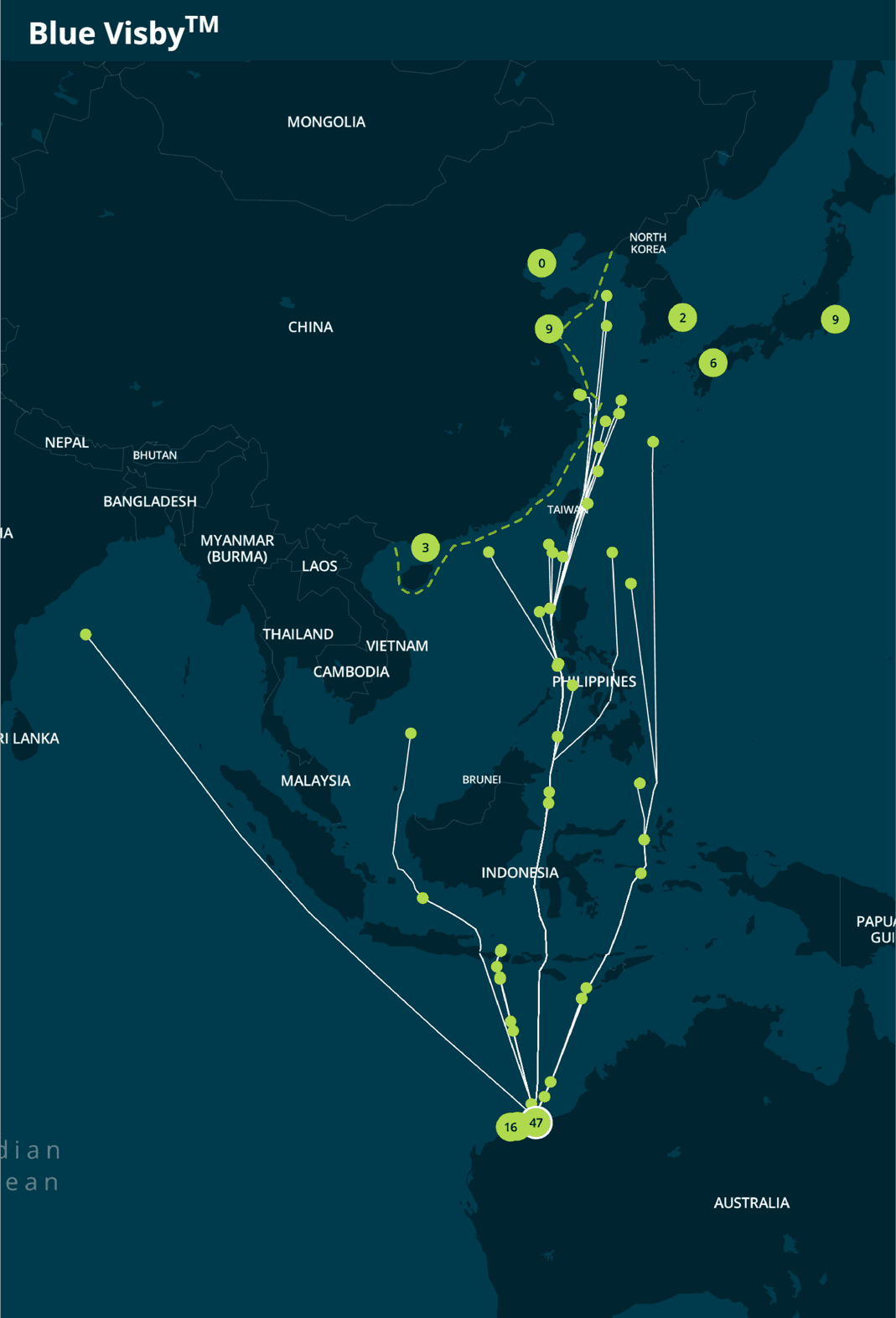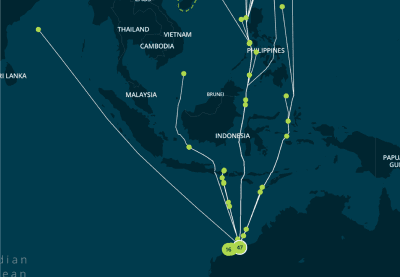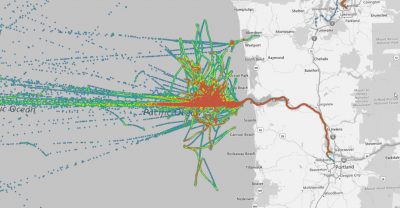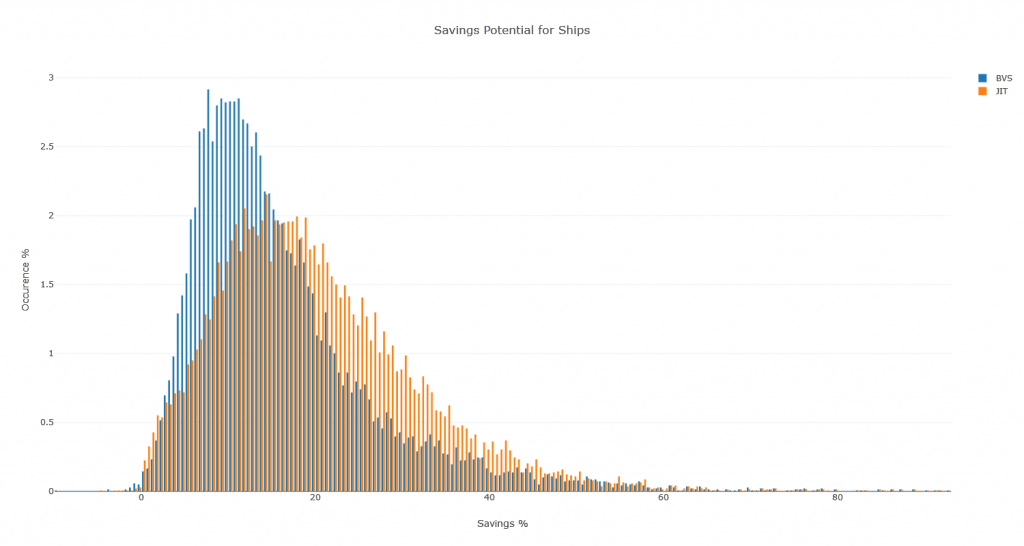NAPA is a consortium coordinator at Blue Visby Solution™
Blue Visby is a multilateral platform for reducing shipping GHG emissions by 15% by eradicating the practice of “Sail Fast, then Wait” without the obstacles of “Just-in-Time.”
Learn more about Blue Visby Solution

Impact of queuing in anchorage
Dry bulk and tanker vessels sail to their destination port and inform the port they are arrived (tender notice of readiness) at the anchorage. Typically, they do not adjust their speed during the voyage if the port is congested or the port facilities are not available for cargo operations. This practice, known as “Sail Fast, Then Wait” (SFTW) or “Rush to Wait”, goes back to the early 20th century, a time when communications between vessel and shore were limited, and information about ships and cargoes was not known to third parties.
Consequently, the bulk transportation fleet spends about 10% of its lifetime in anchorage waiting to be loaded or discharged.
By removing this inefficiency and allowing vessels to arrive perfectly just in time (JiT), bunker consumption and GHG emissions could be reduced about 20%. The International Maritime Organization has recognized the problem and set out both the benefits and the obstacles of JiT in its Just-in-Time arrival guide.
Barriers to Just-in-Time operations
The IMO JiT Guide lists significant and undisputable benefits for different stakeholders in the voyage. So why isn’t it done today? The guide also lists the barriers to adoption: data availability and exchange, lack of standardization, absence of global protocols for communicating relevant information, fragmentation (a multitude of ports, actors within a port, vessels, cargo interests), and the lack of a contractual architecture that would allow the adoption of efficiency measures.
These are formidable obstacles for even the most sophisticated ports.
Therefore, perfect JiT procedures in bulk shipping are impossible at scale today and will be unimaginable for several decades.
The solution
There is consensus in the maritime industry that maritime decarbonization is only possible through collaboration across the supply chain.
The Blue Visby™ Solution uses collaboration to eradicate the wasteful practice of Sail Fast, then Wait.
The Blue Visby™ Solution consists of a collaborative technological and contractual platform that enables most of the benefits of JiT without most of the problems.
The technological platform does not rely on information from ports and terminals about berth availability. It provides participating vessels with dynamically optimized target arrival times, which consider the overall conditions at the port, weather, and the position and course of other ships steaming to the same destination. The system only provides target arrival times, allowing participating vessels to use their own weather routing or voyage planning software.
The contractual platform enables the operation of the technological platform and resolves the so-called “agency problem” and “split incentives” through a sharing mechanism.
NAPA has conducted extensive studies using its unparalleled data and systems on over 150 000 voyages and over 1,500 ships. The results show a median CO2 reduction of 15.9% over analyzed voyages, with a typical speed reduction of voyages of about 1.0kn, which is entirely feasible from an engineering perspective.
The graph below shows the bunker consumption saving distribution from the perfect JiT arrivals (in orange) and the Blue Visby Solution (in blue).
Not only does the Blue Visby Solution deliver most of the benefits of JiT, but it delivers superior savings to most retrofit options available, without the need for any hardware or other onboard investment.
The most important feature of the Blue Visby Solution is that it is compatible with any new fuel, any new technology, and any retrofit. It is a solution to the practice of SFTW, which is simply unsustainable and incompatible with a decarbonization future. Or, to put it differently, will the industry invest the trillions needed to decarbonize, and still tolerate the wasteful utilization of assets through ships that sail fast, then wait?
For more information about the solution or the involved stakeholders, contact Pekka.Pakkanen@napa.fi or Mikko.Kuosa@napa.fi.


